The payload computer aboard the Hubble Space Telescope stopped running on Sunday, June 13, 2021, and now the operations team is working to either save the module or switch to a backup. Plus, a protoplanetary disk, stellar mega-flares, missing dark matter, trans-Neptunian objects, and a review of Brandon Sanderson’s novel Skyward.
Podcast
Transcript
Hello and welcome to the Daily Space. I am your host Dr. Pamela Gay.
And I am your host Beth Johnson.
And we are here to put science in your brain.
I want everyone to pause and just look at this image. Those of you listening to this on our podcast, click over to DailySpace.org.
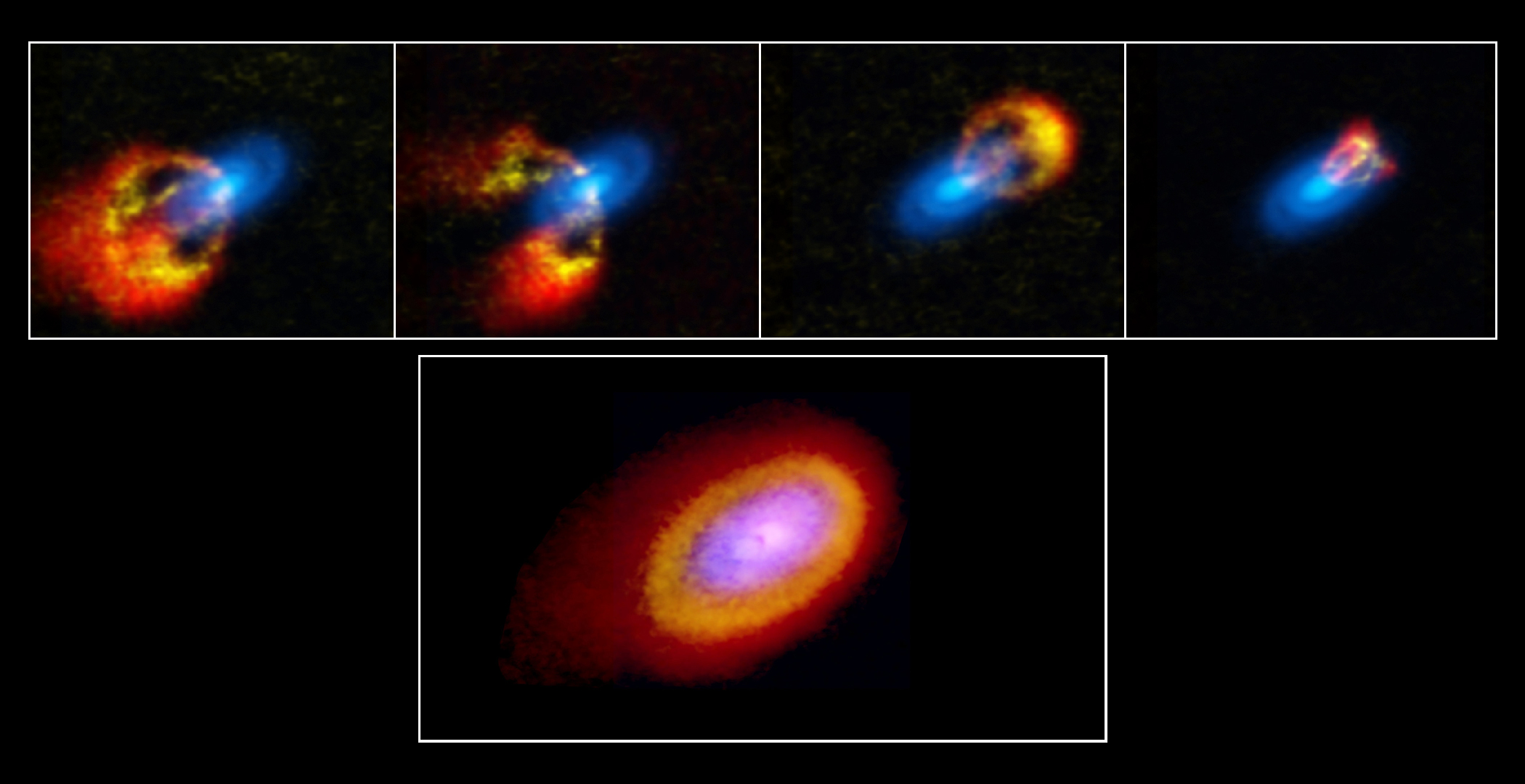
This series of images is a solar system 400 light-years away that researchers have caught in the act of forming. According to lead researcher Theresa Paneque-Carreño: Studying how planets form is difficult because it takes millions of years to form planets. This is a very short time-scale for stars, which live thousands of millions of years, but a very long process for us. What we can do is observe young stars, with disks of gas and dust around them, and try to explain why these disks of material look the way they do. It’s like looking at a crime scene and trying to guess what happened.
The particular crime scene they are observing is Elias 2-27, a star previously observed to be surrounded by a disk of material that had spiral structures. In these new observations, Paneque-Carreño said: We discovered in 2016 that the Elias 2-27 disk had a different structure from other already studied systems, something not observed in a protoplanetary disk before: two large-scale spiral arms. Gravitational instabilities were a strong possibility, but the origin of these structures remained a mystery and we needed further observations.
Gravitational instabilities occur when the stuff that is doing the gravitational pulling has either too much or too little stuff and doesn’t pull the same way as its surroundings. In this case, they think that instability is a knot of material that will one day be a planet. You saw it here, folks; this is a planet forming.
From the long wavelengths of Atacama Large Millimeter/submillimeter Array (ALMA), we now turn to look at young star systems in super short X-ray wavelengths using the Chandra X-ray Observatory.
Researchers have long known that young stars can emit powerful flares that can clear their surroundings of lighter-weight material. Exactly how common these kinds of events actually are has been a mystery, so this team watched and counted. Specifically, they watched 24,000 stars under five million years old in forty different regions of the sky. They caught over one thousand stars giving off flares that are vastly more powerful than anything we’ve seen in our more adult-aged Sun.
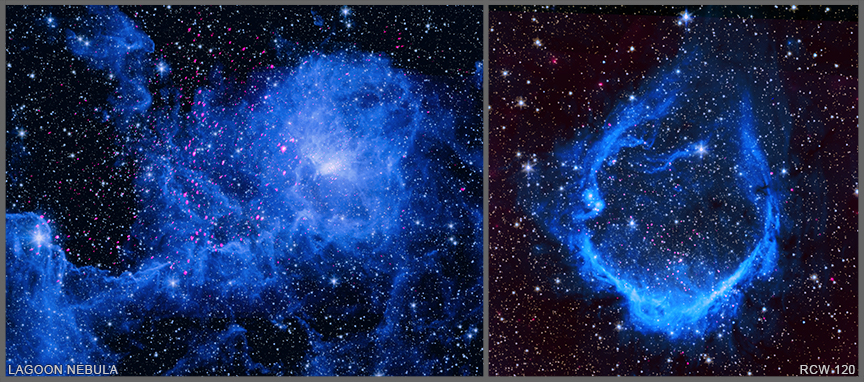
These stellar toddlers were caught giving off flares 100,000 times to, in a few instances, 10,000,000 times more energetic than our Suns flares. The smaller flares are weekly occurrences for the young stars, with about two mega flares occurring each year. According to a release from Chandra: …scientists have argued that these giant flares can help “give” planets to still-forming stars by driving gas away from disks of material that surround them. This can trigger the formation of pebbles and other small rocky material that is a crucial step for planets to form. On the other hand, these flares may “take away” from planets that have already formed by blasting any atmospheres with powerful radiation, possibly resulting in their complete evaporation and destruction in less than 5 million years.
Exactly how these X-ray flashes help and hinder will require future study.
From things you look at in infrared to things we see in X-rays, we now turn to things we don’t see at all: dark matter.
Back in 2018, scientists spotted a galaxy with stellar motions consistent with the galaxy not really having the invisible dark matter we thought was omnipresent in galaxies. Nicknamed DF2, this system is a giant blob of ancient stars. How you can get a galaxy without dark matter is not something scientists can answer. Heck, we thought galaxies formed in the large halos of dark matter that pulled in the luminous matter! But when researchers added up all the observed light from this system and measured all the motions, the observed stars were all that was needed to explain the observed motions.
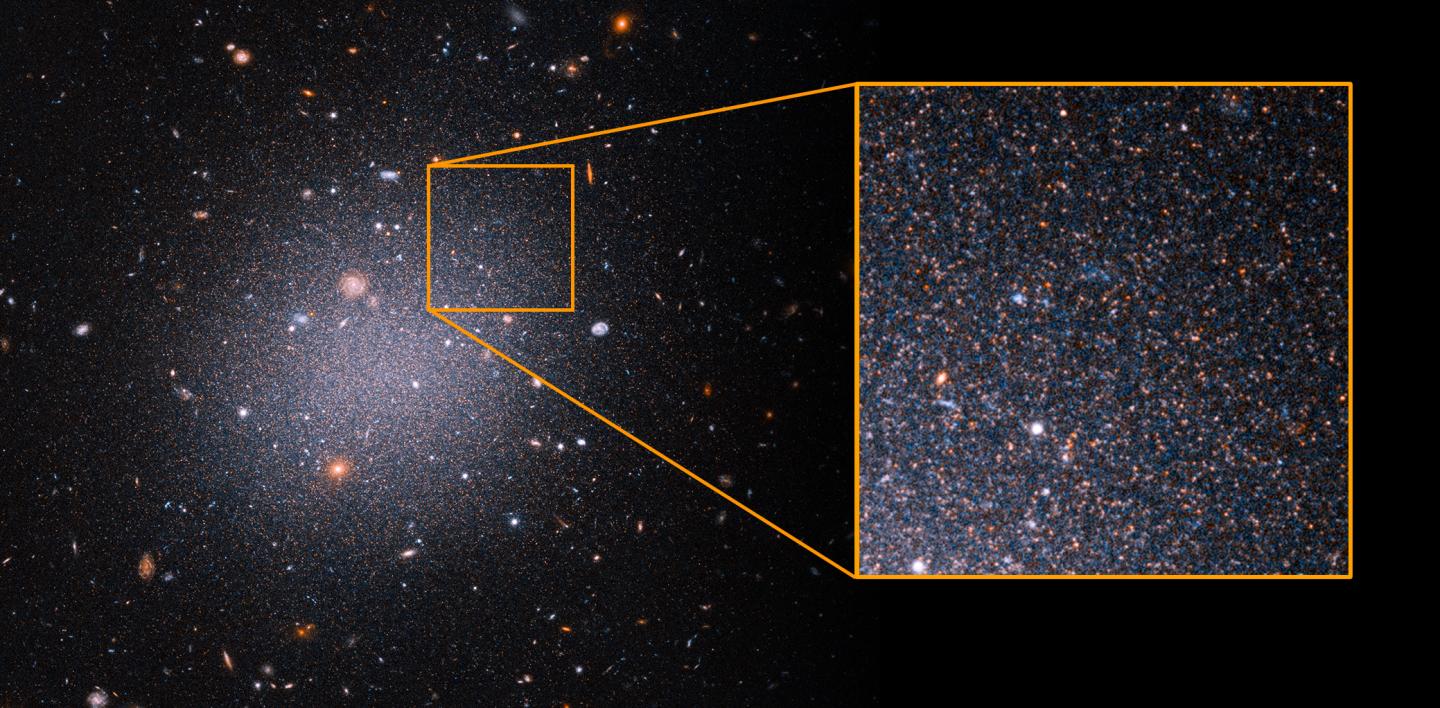
Now, there is one variable that goes into these calculations that is pretty important: you have to know what distance to the galaxy so that you can calculate how big the stars actually are based on that distance and how bright they appear. In 2018, a distance of 65 million light-years was used based on a variety of distance calculations. If this estimate was just 30% off, and the galaxy was more like 42 million light-years away, then it would have a normal amount of dark matter and all would be right with science.
To try and confirm the distance, a team led by Zili Shen re-examined this system and used forty orbits of the Hubble Space Telescope to get highly precise observations of individual stars. These measurements revealed with improved accuracy that DF-2 is not where scientists thought. It is actually farther away. In fact, the system is located 72 million light-years away. According to collaborator Pieter van Dokkum: Hubble really shows the entire thing. That’s it. It’s not just the tip of the iceberg, it’s the whole iceberg.
Somehow, there really is a galaxy with no dark matter. Theorists, it’s your turn.
When it comes to understanding planetary formation and system evolution, until recently, we had a sample set of one. Our own solar system was the only one we could look at and analyze. Now we have thousands to look at, in all stages of formation and evolution, from the protoplanetary disk we talked about earlier, to thousands upon thousands of exoplanets found with Kepler and TESS. And still, as our ground-based observatories continue to improve and as we continue to use the Hubble Space Telescope for more local observations, we learn something new about our own system nearly every week it seems.
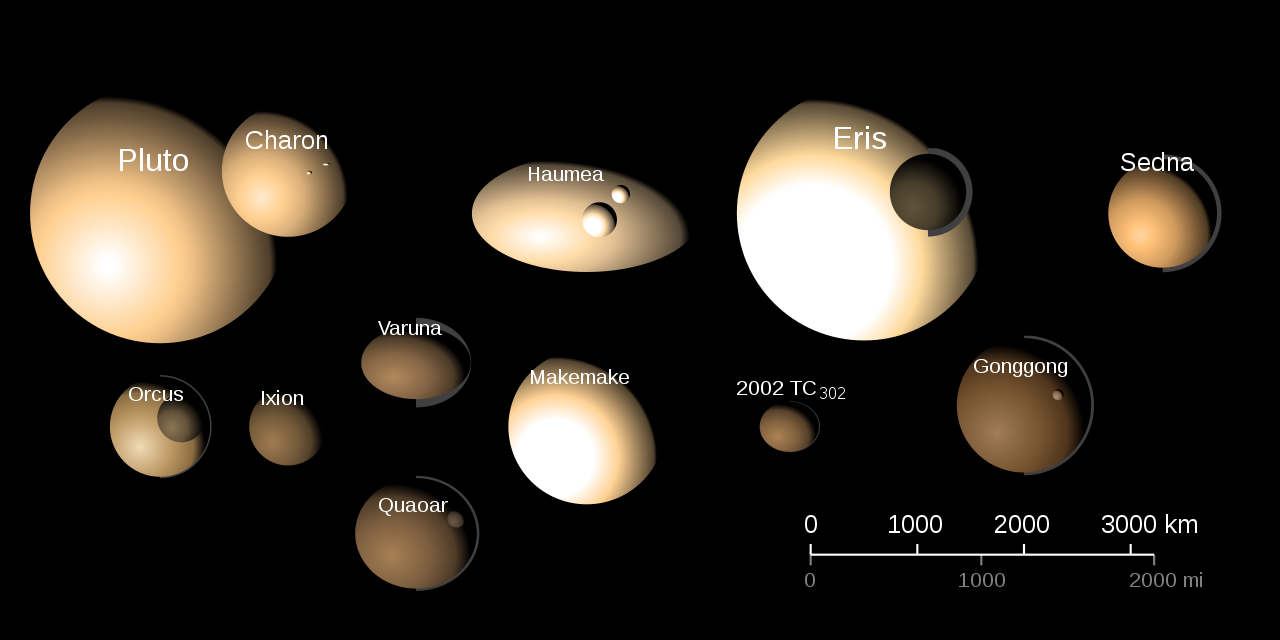
I know it’s still a bit of a controversy, but these improved observatories are what led to the demotion of Pluto to dwarf planet status. Pluto turned out to not be the only object out beyond Neptune. Soon there were Eris and Makemake and Haumea and a whole host of other bodies. Their orbits are just as eccentric as Pluto’s, and they changed our view of the Kuiper Belt. We generally group them all together as Kuiper Belt Objects or as Trans-Neptunian Objects, these distant, icy worlds that erratically orbit past our ice giants. And they are always spoken of as one group.
Now, it turns out that may not be the case. In new research published in The Astronomical Journal and led by Mohamad Ali-Dib from NYU Abu Dhabi, scientists have divided these Trans-Neptunian Objects into two distinct groups. And they did it with the data we already had.
Using a 2019 data set, the team analyzed the chemical composition of the Trans-Neptunian Objects to understand how the Kuiper Belt has changed over time. What they found showed that the two distinct colors of Trans-Neptunian Objects — Very Red and Less Red, which I have also seen referred to as Gray or Blue — actually link back to separate orbital patterns. Add in some math, and these orbital patterns lead back to different locations, so our two groups of Trans-Neptunian Objects formed in different places, possibly from two separate, larger bodies.
This is the first study to combine the factors of both color and orbit of the Trans-Neptunian Objects. Since these tiny, icy worlds are considered fossils from the early days of the solar system, understanding these two new groupings gives us another piece of information about our system’s evolution.
Back when I was in the tenth grade, the Space Shuttle Discovery carried one of the first Great Observatories into orbit: the Hubble Space Telescope. And we very quickly learned that the telescope had issues. Built in the 1980s and delayed in its launch by the Challenger accident in 1986, this telescope was already carrying an old computer when it finally launched. It was also carrying a flawed mirror, but we figured out how to fix that with corrective lenses, so no big deal.
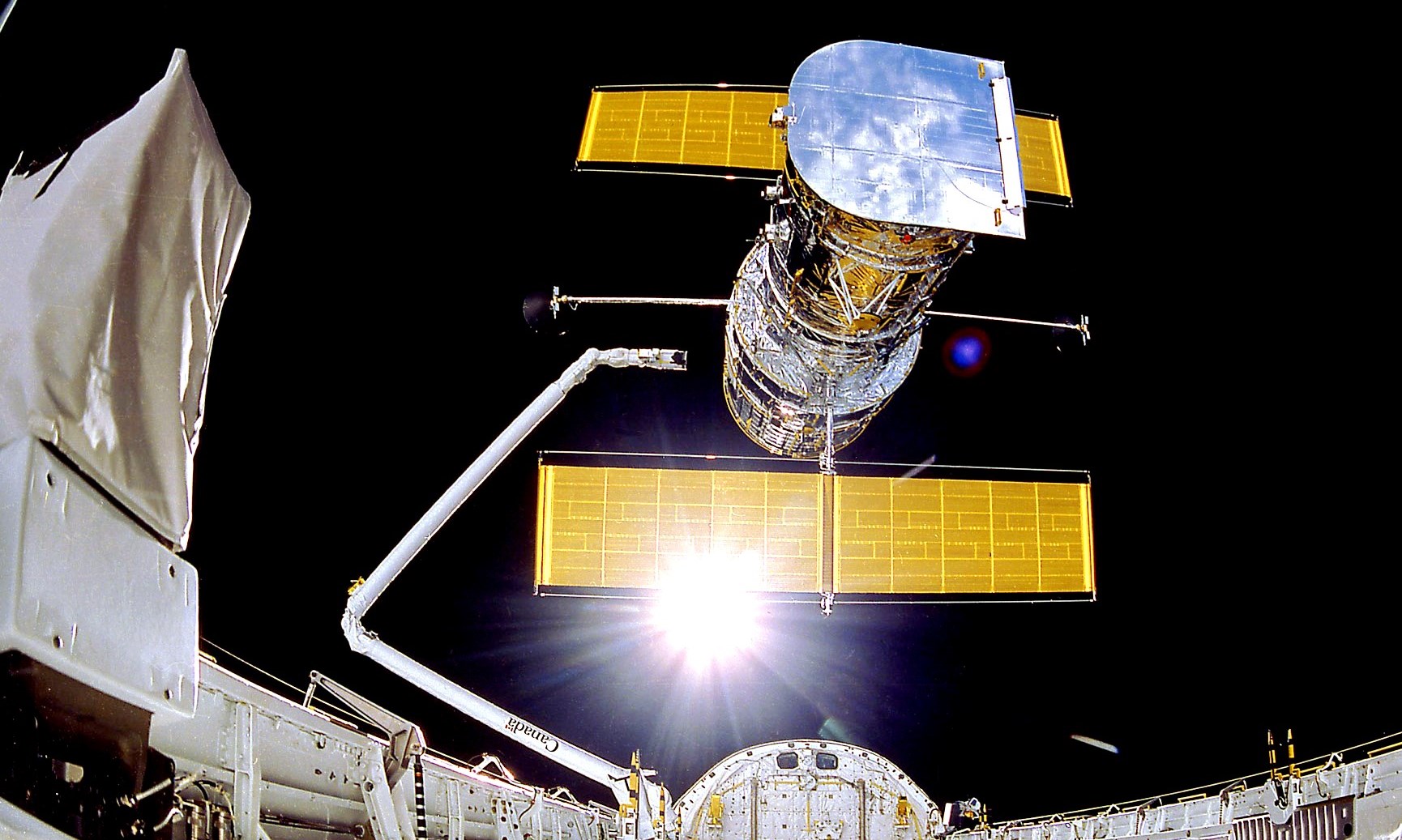
The scope entered its prime in my second year of university, with the first Hubble servicing mission, and for my entire professional life, I’ve benefited from the data this spectacular piece of engineering has been able to send back to Earth. And we’ve gotten to benefit from this telescope far longer than anyone ever expected.
Hubble was designed to fit into the Space Shuttle’s cargo bay and be flown back and forth from space for regular servicing. After the Challenger accident, that process was deemed unsafe, and after Columbia was lost at the beginning of this century, NASA didn’t really want to even send a space shuttle up as high as Hubble’s orbit. The plan was, as soon as JWST was up and operating, Hubble would retire, knowing its legacy of science had safely passed to a new set of mirrors.
JWST kind of missed its 2007 launch and its 2010 launch, and now it’s 2021, and JWST is still on the ground.
To allow Hubble to keep working engineers at the Space Telescope Science Institute had to figure out how to time and time again update the Hubble without bringing it home, and then everyone, including folks like you, had to petition and plead for one final mission to give it new life before the Space Shuttle program was retired. Back in May 2009, we got that last servicing mission, and it was hoped we’d get a few more years of science. More than a decade later, we have been continuing to get great science.
But on Sunday, Hubble shut itself down when an error occurred in one of its original, circa-1980 computers. As the Voyager missions have proven, NASA computers are a lot more reliable than your average laptop, but at 30? Didn’t we all start feeling a little bit more tired at 30?
Engineers are in communications with the spacecraft and the problem seems to be in a degraded memory module; attempts are being made to switch over to a backup module. According to the NASA Goddard operations team: Assuming that this problem is corrected via one of the many options available to the operations team, Hubble is expected to continue yielding amazing discoveries into the late 2020s or beyond.
I’m glad that this statement seems to indicate there are no longer plans to retire Hubble as soon as JWST is up unless, of course, they are hinting JWST won’t launch until the late 2020s, but this is a big if, and the team went on to add: …there is no definitive timeline yet as to when this will be completed, tested and brought back to operational status.
We here at the Daily Space would like to wish the team godspeed in getting Hubble operational again. We are not yet ready for it to pass into that long dark void.
[Book Review]
This has been the Daily Space.
Learn More
Solar System Caught in the Act of Planet Construction
- NRAO press release
- “Spiral Arms and a Massive Dust Disk with non-Keplerian Kinematics: Possible Evidence for Gravitational Instability in the Disk of Elias 2-27,” T. Paneque-Carreño et al., to be published in The Astrophysical Journal (preprint on arxiv.org)
- “A dynamical measurement of the disk mass in Elias 2-27,” Benedetta Veronesi et al., to be published in The Astrophysical Journal (preprint on arxiv.org)
Mega-Flares From Stars Shape Surroundings
- Chandra press release
- “X-ray Super-Flares From Pre-Main Sequence Stars: Flare Energetics And Frequency,” Konstantin V. Getman and Eric D. Feigelson, to be published in The Astrophysical Journal (preprint on arxiv.org)
Sometimes, the Dark Matter Really Isn’t There
- NASA Goddard press release
- IAS press release
- “A Tip of the Red Giant Branch Distance of 22.1 ± 1.2 Mpc to the Dark Matter Deficient Galaxy NGC 1052–DF2 from 40 Orbits of Hubble Space Telescope Imaging,” Zili Shen et al., 2021 June 9, The Astrophysical Journal Letters
Trans-Neptunian Objects Divided Into Two Groups
- NYU Abu Dhabi researchers discover orbital patterns of trans-Neptunian objects (EurekAlert)
- “The Rarity of Very Red Trans-Neptunian Objects in the Scattered Disk,” Mohamad Ali-Dib, Michaël Marsset, Wing-Cheung Wong, and Rola Dbouk, 2021 June 16, The Astronomical Journal
Hubble Space Telescope Shutdown due to computer error
- NASA Goddard press release
Credits
Written by Pamela Gay and Beth Johnson
Hosted by Pamela Gay and Beth Johnson
Audio and Video Editing by Ally Pelphrey
Content Editing by Beth Johnson
Intro and Outro music by Kevin MacLeod, https://incompetech.com/music/


 We record most shows live, on Twitch. Follow us today to get alerts when we go live.
We record most shows live, on Twitch. Follow us today to get alerts when we go live.